Holyrood: Inside The King's official residence in Scotland, from throne room to the bed chamber of Mary, Queen of Scots
Holyrood — or, to give it its full title, The Palace of Holyroodhouse — is the official residence in Scotland of His Majesty King Charles III. To coincide with the publication of a new history of the palace, John Goodall offers an overview of the creation, abandonment and rebirth of this working royal residence over the past 900 years. Photographs by Paul Highnam for Country Life.
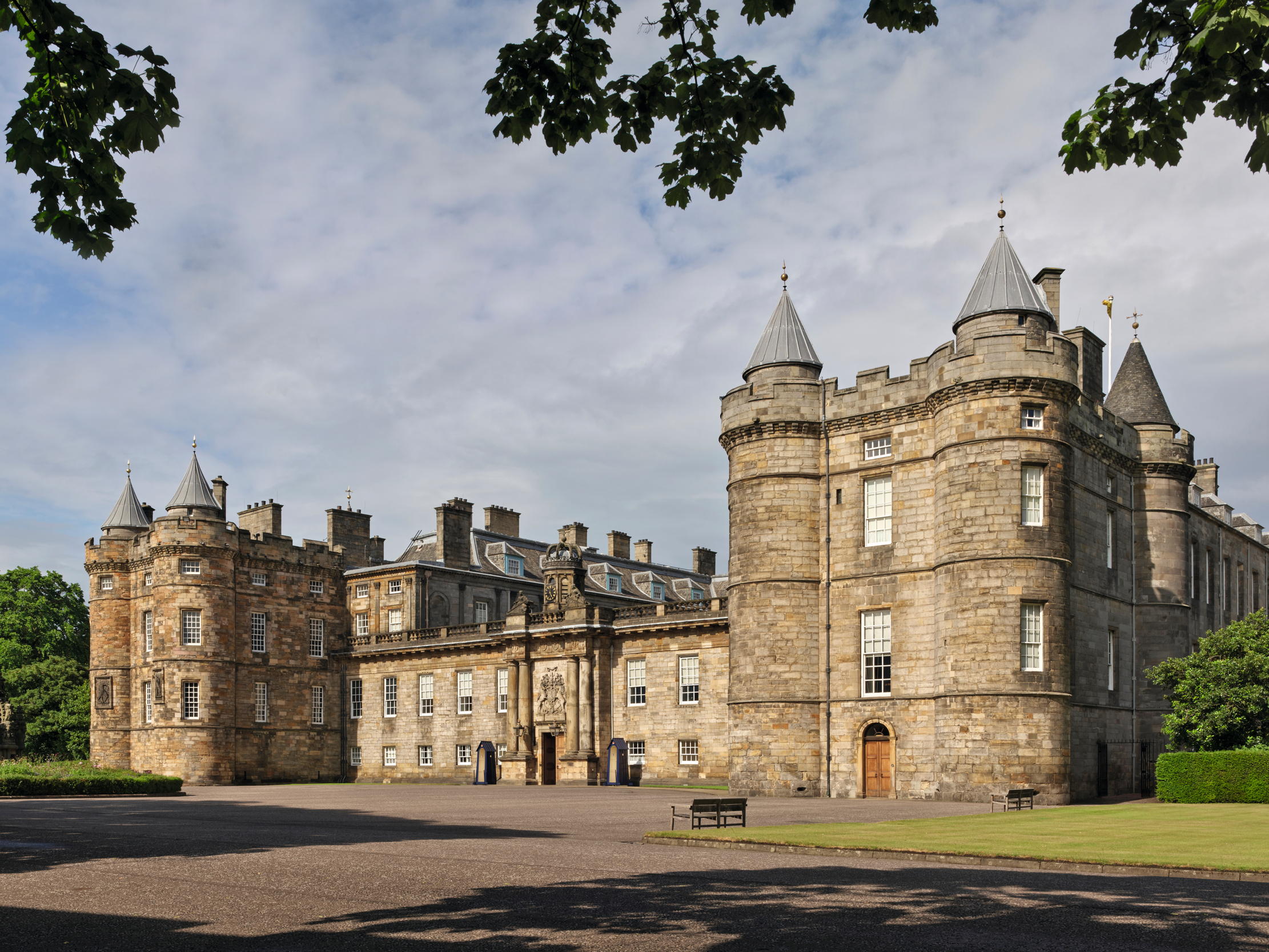

Late at night on March 26, 1603, an English courtier, Sir Robert Carey, knocked at the gate of Holyroodhouse, the principal palace of the Kings of Scotland on the edge of Edinburgh. He was exhausted by a two-day ride from London and bloodied by a bad fall from his horse. Nevertheless, he was ushered immediately into the royal chamber, where James VI had retired to bed. Sir Robert brought the momentous and long-anticipated news that Elizabeth I was dead. According to Sir Robert’s memoir, he knelt before the King and ‘saluted him by his title of England, Scotland, France and Ireland’. In return, the King ‘gave me his hand to kiss and bade me welcome’. Sir Robert then produced ‘a blue ring’ — thrown to him by his sister from a window of Richmond Palace — as a token of his reliability.
The succession of James VI to the English throne marked a watershed in the complex history of this remarkable palace, which is now the subject of a magnificently produced volume published this month — The Palace of Holyroodhouse, edited by Deborah Clarke (Royal Collection Trust, £55) — to which this article is indebted.
The palace was the offshoot of an abbey established in 1128 by David I of Scotland and dedicated to the Holy Cross, the Virgin Mary and all the saints. ‘Holy Cross’, or Holyrood, as it became known, was an Augustinian foundation, its community of priests or canons following the rule believed in the Middle Ages to have been written by St Augustine of Hippo (d. 430). It was one of several royal monasteries in Scotland — including Scone Abbey — established in the 1120s to modernise the institutions of the Scottish church and the new community was drawn from Merton Priory, Surrey, a foundation patronised by Henry I’s wife, Edith, also known as Matilda, David I’s elder sister.
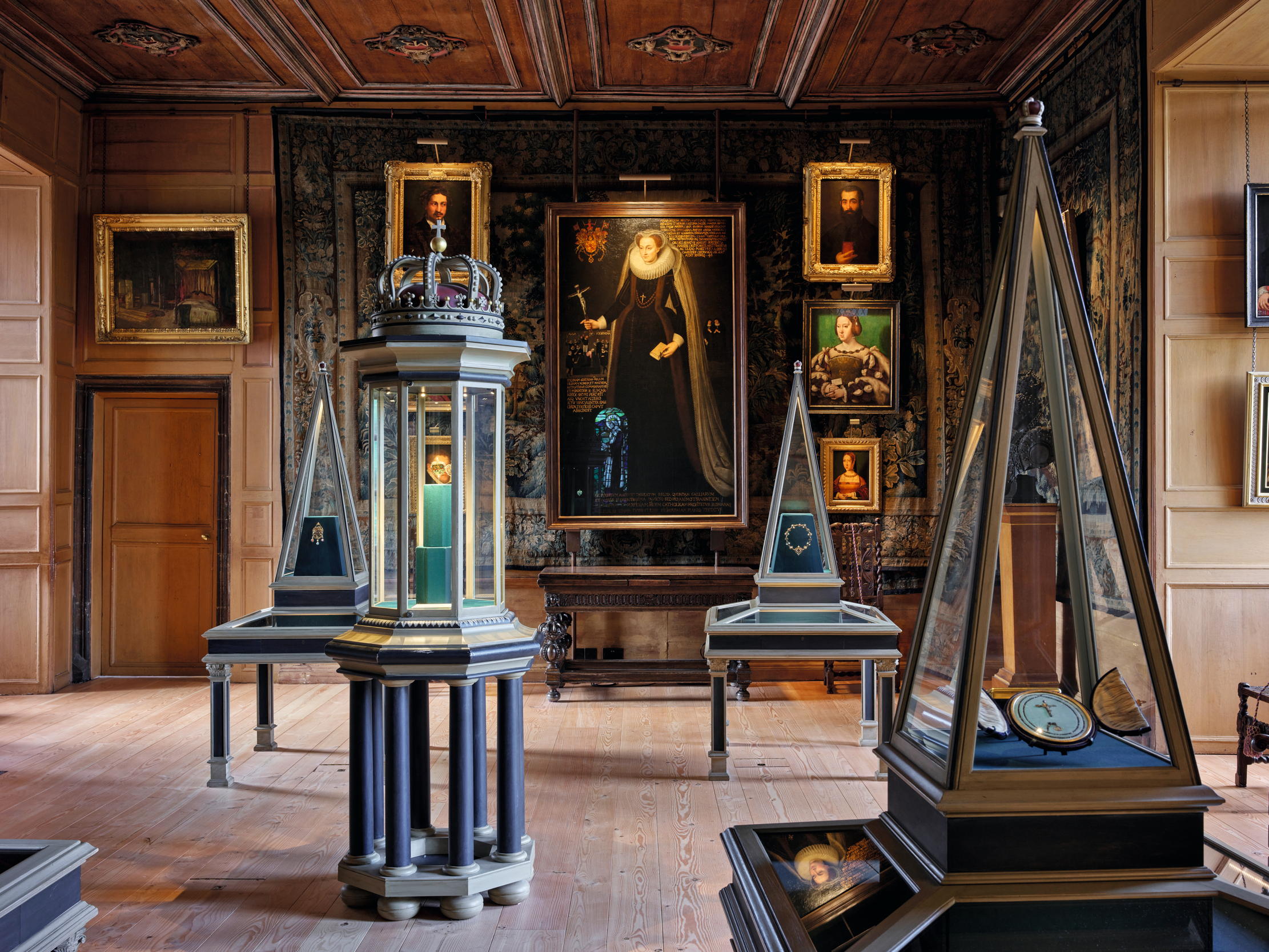
The abbey, which lay at the foot of the Royal Mile as it descended from the castle, controlled an adjacent trading burgh called Canongate. Its large precinct included a conventional grouping of a church and monastic buildings arranged around a cloister within enclosing gardens and courts. The church itself, of which only the nave and one western tower now remains, was massively expanded within the first century of its existence, its architecture being influenced by the 1190s work at Lincoln Cathedral (Fig 3). As did all the great monasteries in southern Scotland, the abbey suffered intermittent damage at the hands of the English, but it enjoyed exceptional standing and, in 1379, the abbot secured the prestigious right to wear a mitre.
From the first, and by virtue of its location in the capital, Holyrood Abbey enjoyed close ties with the Kings of Scotland and, during the course of the 15th century, it effectively became their royal church (much like Westminster to their English counterparts). They also made use of the precinct, which offered much more spacious accommodation than Edinburgh Castle. James II, who ruled from 1437 to 1460 was born, crowned, married and eventually buried here. From his reign there survives the Holyrood Ordinal, a compilation of liturgical and other texts that offers a miraculous account of the abbey’s foundation.
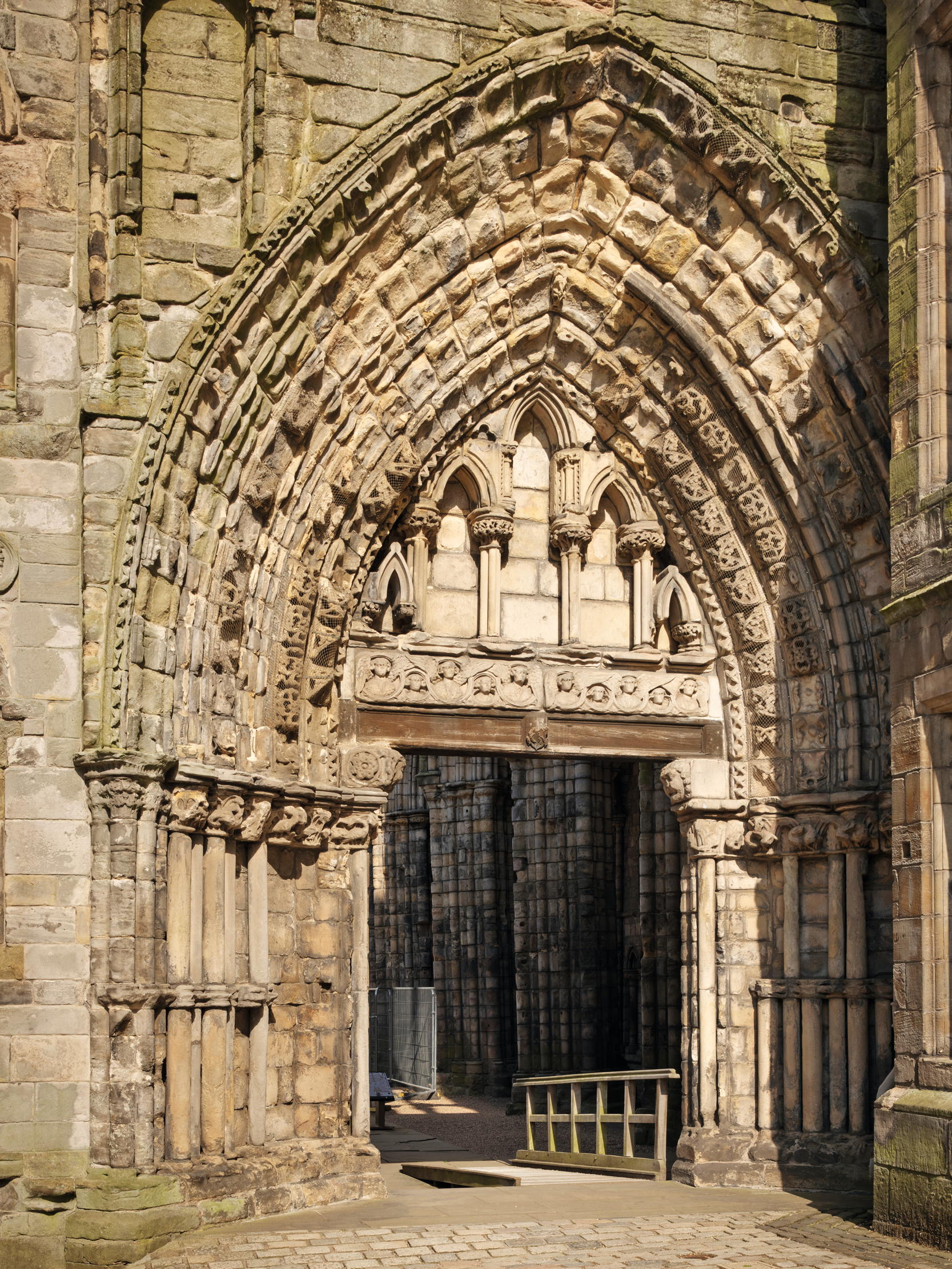
According to this, David I rode out hunting on the Feast of the Exaltation of the Cross, contrary to the advice of his confessor, and was dismounted by a huge stag. As it lowered its head to gore him, he was able to push the beast away using a cross that appeared between its antlers. The image of a stag with a cross between its antlers, an emblem more usually associated with St Hubert, was used from this period on the Abbey seal.
Holyrood ‘house’ — as distinct from the Abbey — properly came into existence in response to the approaching marriage of James IV to Margaret Tudor, Henry VIII’s sister, in 1503. This prompted the modernisation of the royal lodgings overseen by the master mason Walter Merlioun. Hitherto, it’s likely that royal visitors had been accommodated in the western claustral range. Now, a courtyard residence was created, with apartments for the King and Queen arranged at first-floor level. This cannibalised parts of the existing monastic buildings, including the refectory, which seems to have been converted into a hall. As part of the work, a new gateway to the precinct was created or renewed.
Sign up for the Country Life Newsletter
Exquisite houses, the beauty of Nature, and how to get the most from your life, straight to your inbox.
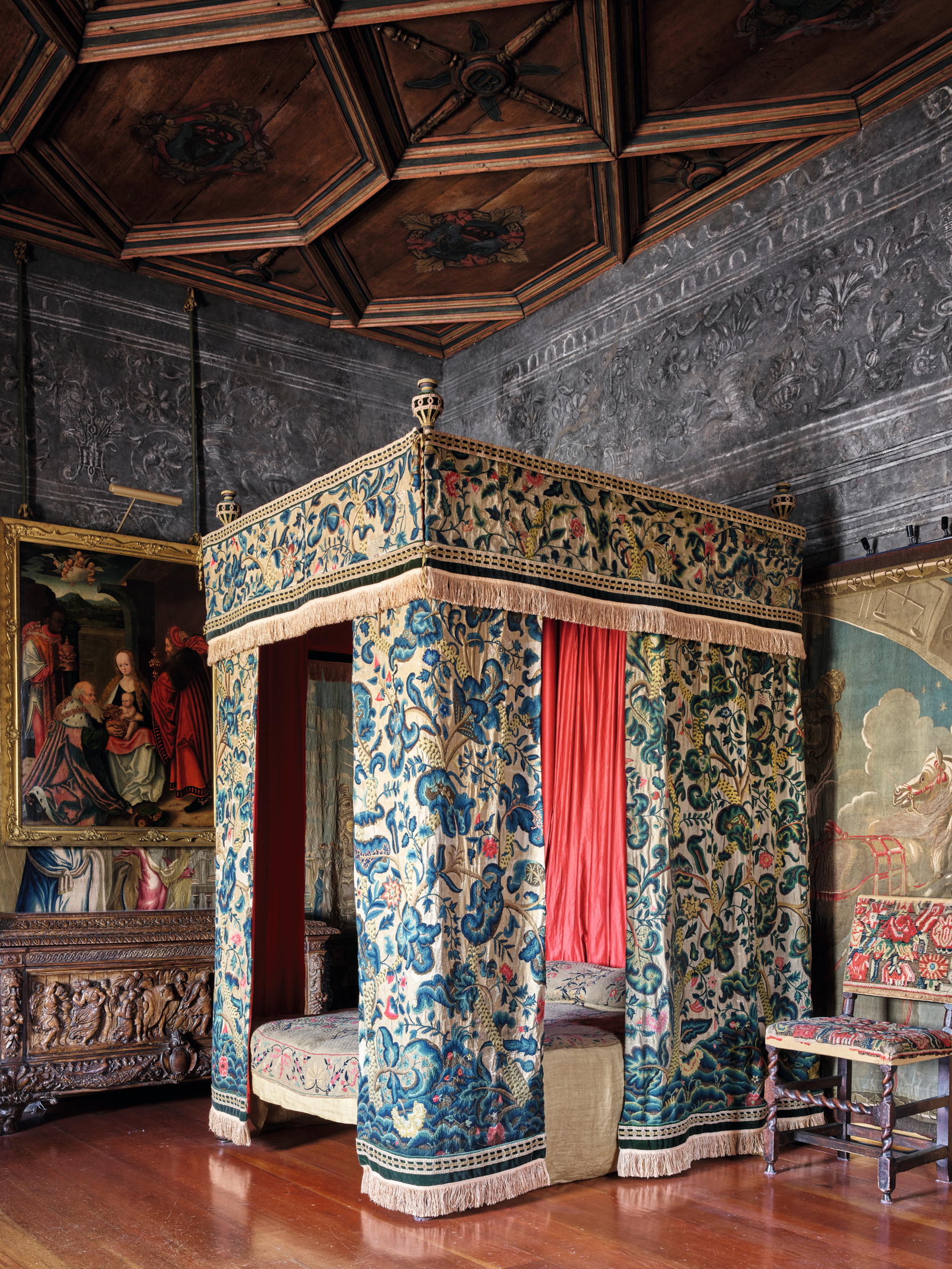
Further improvements were undertaken by James IV’s son, James V, who re-fronted the building and, in 1528–32, added a tower decorated with large heraldic panels. The tower now stands to the left of the main façade and is the earliest element of the house to survive. James V also installed his illegitimate son as the first secular governor or Commendator of the Abbey. Many important Scottish monasteries were provided with commendators from the mid 15th century onwards, effectively diverting their revenues into the hands of courtiers.
Henry VIII’s attempt in 1544 to force the infant Mary, Queen of Scots to marry the future Edward VI, the so-called ‘Rough Wooing’, brought an English army to Edinburgh. The abbey was looted — its eagle lectern was taken to St Stephen’s Church, St Albans, Hertfordshire, and its brass font (now lost) was presented to St Albans Abbey — and the choir left ruinous. Presumably, Scotland’s royal tombs were all destroyed at this time.
Further damage was done in 1547 and, the following year, the Scottish Queen was betrothed to the French Dauphin. Her mother and Regent of Scotland, Mary of Guise, oversaw repairs at Holyrood and installed the fine surviving ceilings in James V’s tower. This contained withdrawing chambers used by Mary, Queen of Scots (Fig 4). She was married here twice and, in 1566, witnessed the harrowing murder of her Italian secretary, Rizzio, in the tower, where his blood is still supposed to stain the floor.
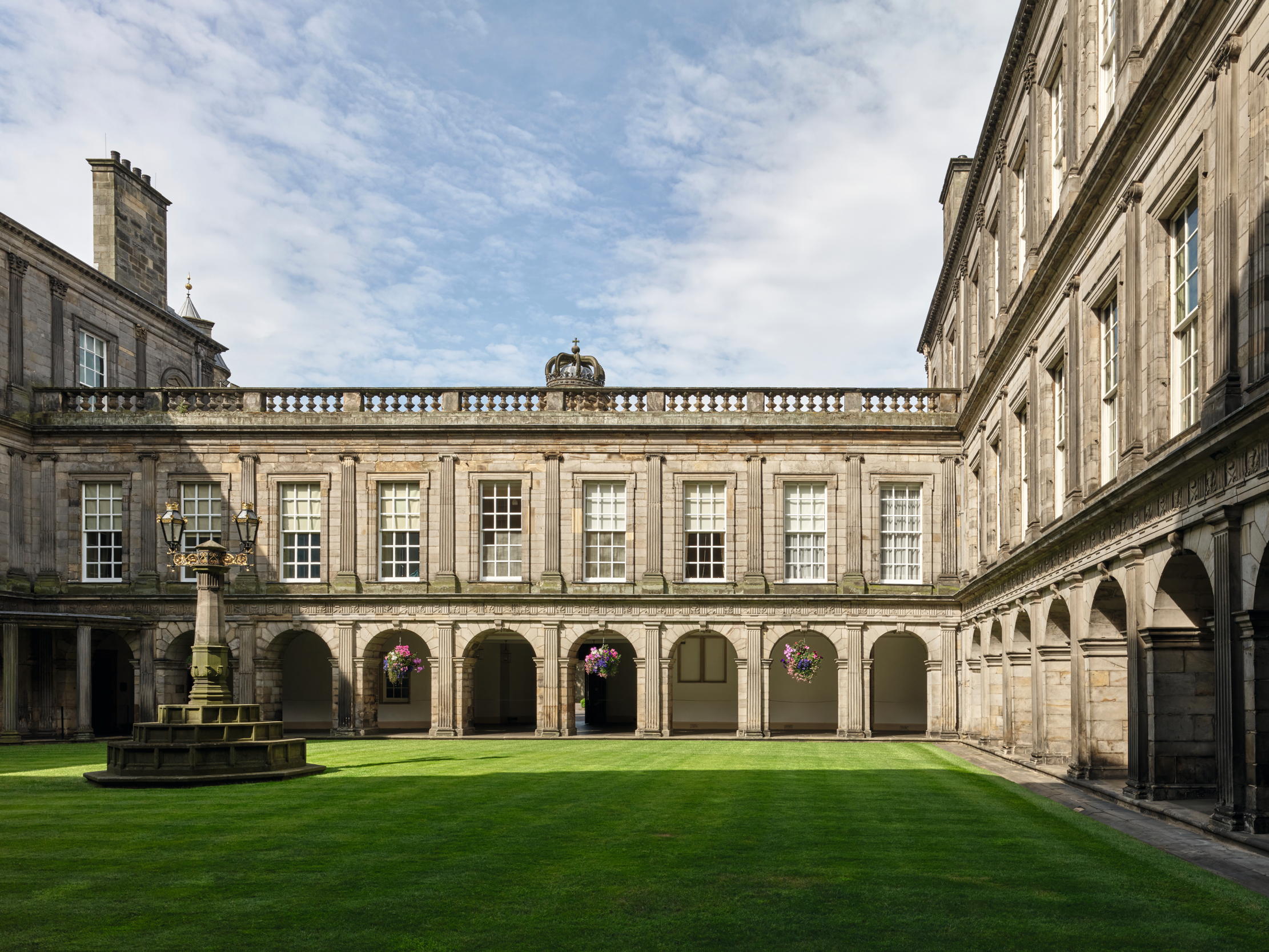
In the meantime, Scotland’s Reformation Parliament of 1560 closed the monastery and transferred its property to the Commendator. The 21-strong community of canons was free to remain in residence and the church continued for a time — probably until Mary’s abdication in 1567 and subsequent flight to England — as a place of Catholic worship. In 1570, following complaints about the state of the building, the Commendator used the materials from the eastern arm and transepts to repair the nave as a parish church. Most of the claustral ranges may also have been cleared at this time.
Mary’s son, James VI, succeeded to the throne in 1567 at the age of 13 months. He spent his infancy at Stirling, but took up residence in Holyrood in 1579. He was later joined here by his wife, Anne of Denmark, who was crowned at Holyrood according to the traditional rite in May 1590. The palace remained their principal residence until they heard news of Elizabeth I’s death. Only 10 days later, on April 5, 1603, James VI set off from Edinburgh on a triumphal progress to London. He was followed at the end of May by Anne and an inventory taken the following month shows that the interiors had been stripped bare.
It was not until 1617 that the King next returned. In preparation for his arrival, Inigo Jones directed repairs to the buildings and chapel. One important legacy of this visit was the King’s determination that all future meetings of the Privy Council that governed Scotland should be at Holyrood. A further round of changes anticipated Charles I’s coronation in Holyrood in 1633, but, thereafter, much of the palace fell victim to a fire on November 13, 1650, when it was occupied by Oliver Cromwell’s troops. According to John Nicoll’s Diary, ‘the whole royal part of that palace was put in a flame, and burnt to the ground… except a little’.
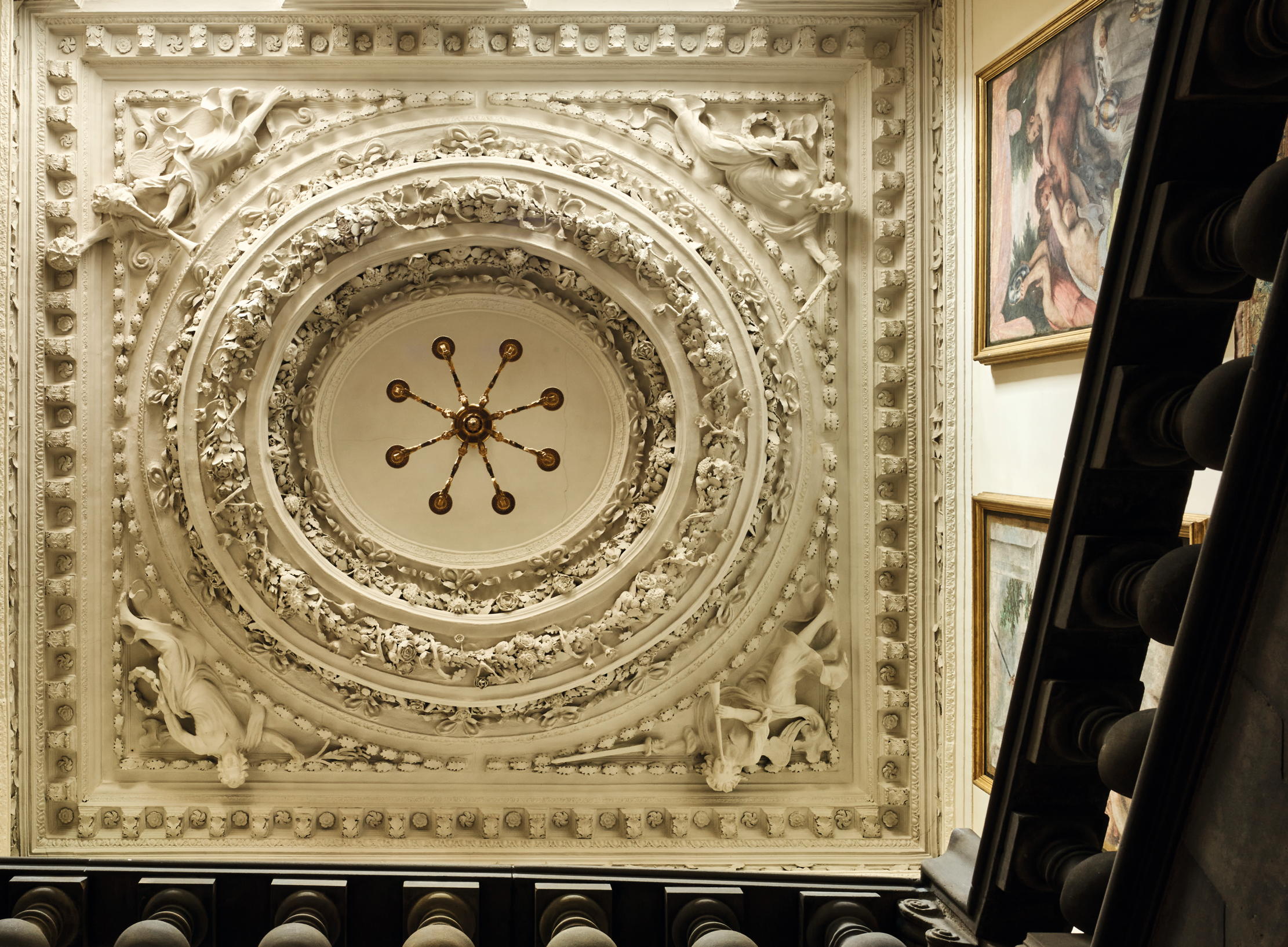
As Lord Protector, Cromwell ordered repairs to create a barracks and meeting place for the Scottish Privy Council. Following the Restoration, Charles II gave John Maitland, Earl — and later Duke — of Lauderdale a leading role in the government of Scotland. In 1669, Lauderdale was appointed the King’s personal representative, or High Commissioner, in order to manage an act of union between Scotland and England. At almost exactly the same time, Lauderdale became an intimate of Elizabeth, Countess of Dysart, a sophisticated and ambitious woman who became his second wife in 1672. The owner of Ham House in Richmond, west of London, she seems to have fired his interest in architecture. It was probably with her encouragement, therefore, that he began the remodelling of his seat at Thirlestane Castle, Berwickshire, in 1670, and then, from 1671, the reconstruction of Holyroodhouse.
The work to both buildings was directed by one of Elizabeth’s cousins, the apostle of Scottish Classicism, Sir William Bruce, assisted by the master mason Robert Mylne (who, very unusually, signed one of the internal arcades at Holyroodhouse). Bruce’s first conception was less a royal residence than a seat of government with a royal apartment for the use by the High Commissioner, a chamber for the meetings of the Privy Council of Scotland and lodgings for the chief ministers of state (Country Life, August 15, 2012). Charles II took a close personal interest in the design and conformed it more closely to conventions of royal occupation.
As completed, the new palace was laid out around a quadrangle (Fig 5). Its main façade balanced James V’s tower, symbolic of the history of the Palace, with a new counterpart at the opposite corner (Fig 1). The latter, by the King’s express command, contained the Council Chamber. Between the two towers was a low range, entered through a gatehouse with Doric columns and surmounted by the arms of Scotland and a massive stone crown like a dome. The royal regalia or Honours of Scotland are a decorative leitmotif of the 17th-century works.
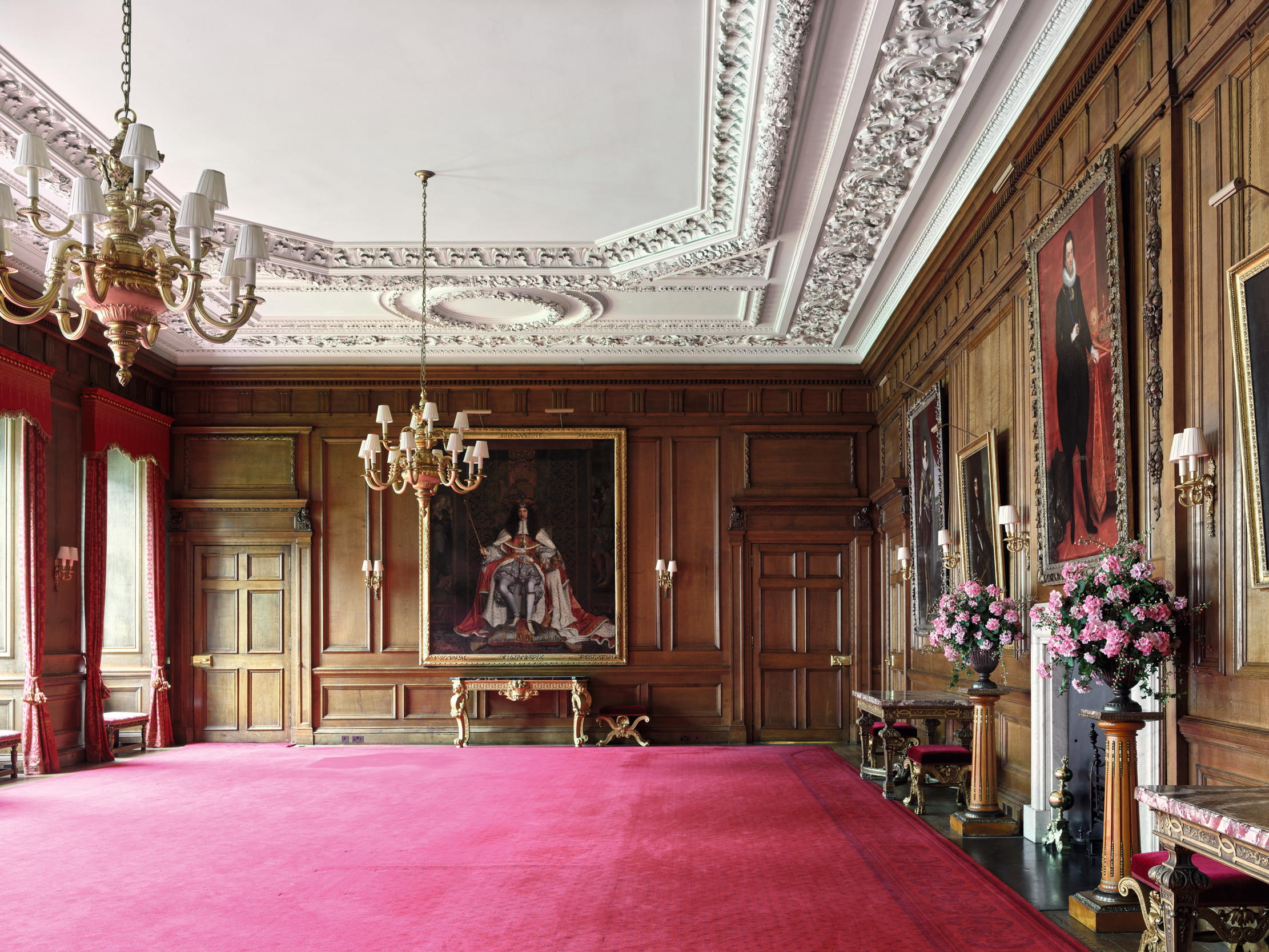
The courtyard is enclosed on its three remaining sides by uniform ranges with hipped roofs. They have cliff-like façades incorporating grids of windows and are detailed with serried ranks of pilasters. At ground level, arcaded walks form an internal cloister for circulation. Opening off the south-west corner of the building is the Great Stair (Fig 6), which formerly gave access to the Council Chamber, now the West Drawing Room, as well as first-floor apartments for the King (Fig 9) and Queen. The latter incorporated the tower used by Mary, Queen of Scots.
Specialists were brought in to furnish the interiors. Two London-based plasterers, for example, John Houlbert and George Dunsterfield, worked on the ceilings. Payments to the former by 1679 approached the stupendous sum of £2,000. One of the outstanding surviving interiors of this circuit of rooms is the King’s Bedchamber (Fig 8), with its deep plaster ceiling painted with the Apotheosis of Hercules by Jacob de Wet.
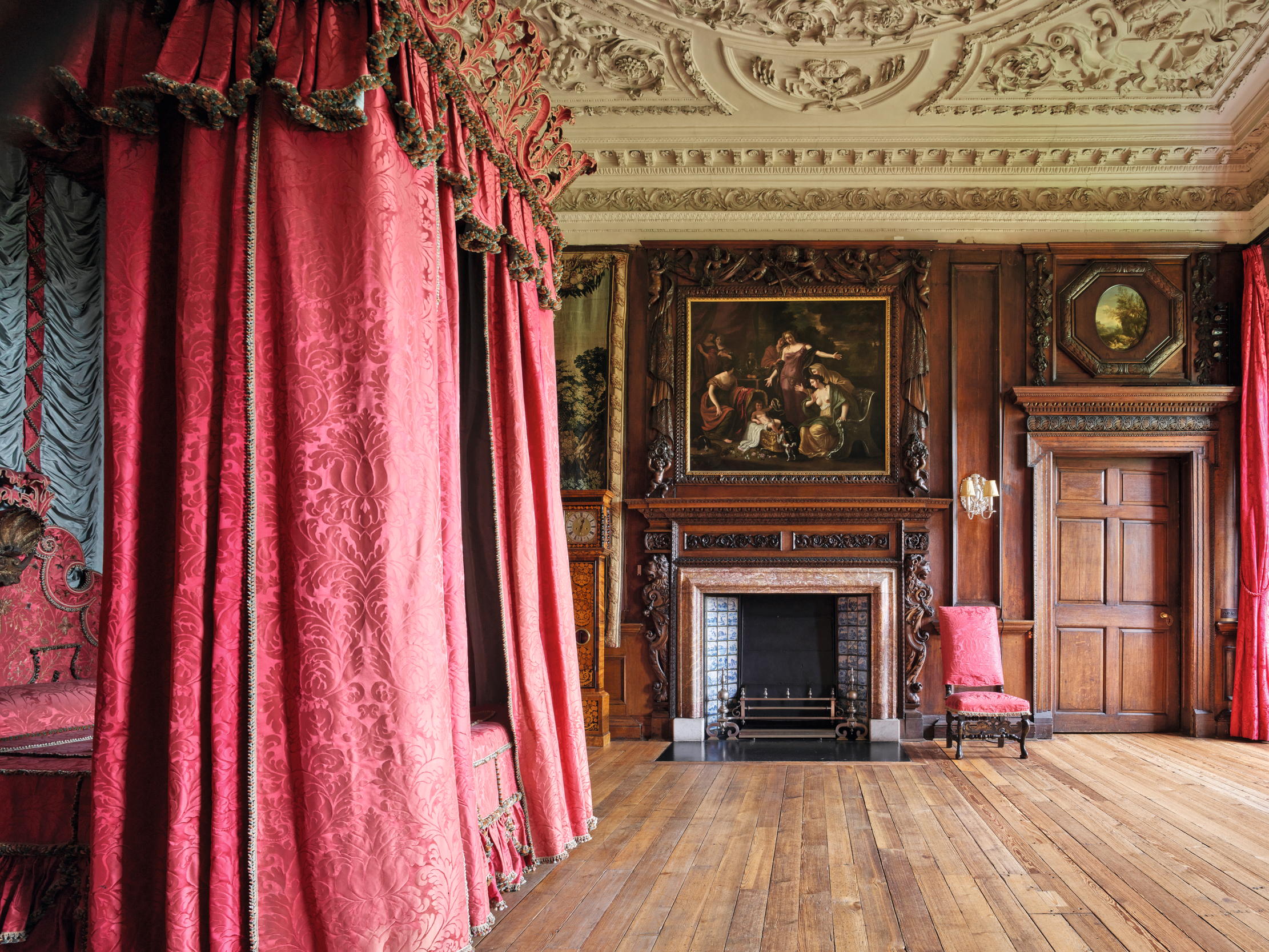
On February 26, 1684, the same artist contracted ‘to completely draw, finish and perfect’ pictures of the ‘Kings who have reigned over this Kingdom of Scotland, from King Fergus the first king, to King Charles II, our gracious sovereign… in number one hundred and ten’. This ancestry, which fills the Great Gallery that connects the two royal apartments, is quite exceptional in scale (Fig 10). Might it have been intended to evoke in physical form the recitation of the descent of the Scottish crown that once accompanied the installation of Scottish kings at Scone? The present decoration of the gallery ceiling, lacklustre beside the virtuosic 17th-century work, dates to 1968.
Charles II never visited Holyroodhouse, but, in 1679, following the political fall of the Duke of Lauderdale, he sent his brother, James, Duke of York, to Scotland. This happily removed the Duke and his family from London during the Exclusion Crisis, the attempt to prevent him as a Catholic from succeeding to the throne. When he was crowned anyway as James II in 1685, he made important changes to Holyroodhouse, establishing a Jesuit college there, converting the Council Chamber into a Catholic chapel and furnishing the Abbey nave as the seat of a new chivalric order, the Order of the Thistle. News of the Glorious Revolution that deposed James II in 1688 encouraged a mob to ransack Holyroodhouse. They destroyed everything they could find, emptied the cellars and broke open the royal burial vault. Its desiccated cadavers fascinated visitors throughout the 18th century.
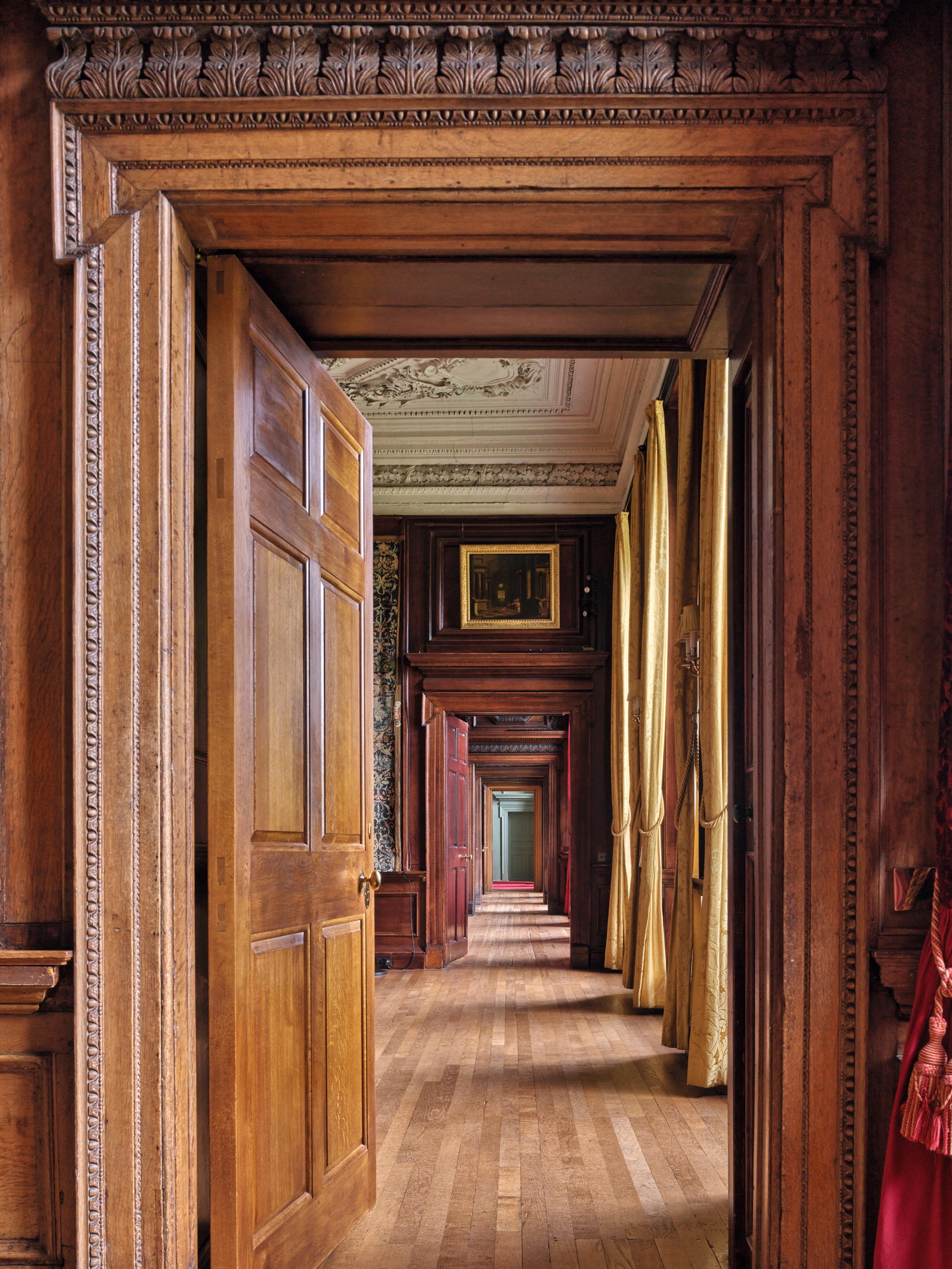
When the Act of Union uniting the kingdoms of England and Scotland was passed in 1707, it immediately rendered the palace an administrative irrelevance. The building, held in the hereditary care of the Dukes of Hamilton, was divided up into grace-and-favour apartments and the Great Gallery came to be used for the regular election of the 16 representative Scottish peers who would attend Parliament in Westminster. The last such election took place in 1959.
During the 1745 Jacobite Rising, Holyroodhouse briefly served as a palace for Bonnie Prince Charlie. As a consequence, the interiors, including de Wet’s paintings in the Great Gallery, were defaced when Holyroodhouse was reoccupied by government troops. Repairs to the building were made afterwards, but with a strict eye to economy, and, despite efforts to maintain the abbey nave, its high vault collapsed in 1768. Another curious episode of royal use occurred after the French Revolution, when Holyroodhouse became a focus of the French court in exile. In the meantime, there was a steady growth of antiquarian interest in the palace, with visitors particularly drawn to James V’s tower, made famous by its association with Mary, Queen of Scots.
It was through tourism, specifically George IV’s visit to Edinburgh in 1822, brilliantly stage-managed by Romantic novelist Sir Walter Scott, that royal enthusiasm for Holyroodhouse was rekindled. During his visit, the King stayed in Dalkeith, but held various events at Holyroodhouse and his interest prompted further restoration, overseen by the royal surveyor, Robert Reid. Following these repairs, William IV gave permission in 1834 for the Lord High Commissioner to the General Assembly of the Church of Scotland to occupy the palace during its annual gathering. Two years later, plans were drawn up by James Gillespie Graham and A. W. N. Pugin to restore the Abbey nave as the assembly chamber. The restoration proposals came to nothing, but the house remains the annual residence of the Lord High Commissioner today.
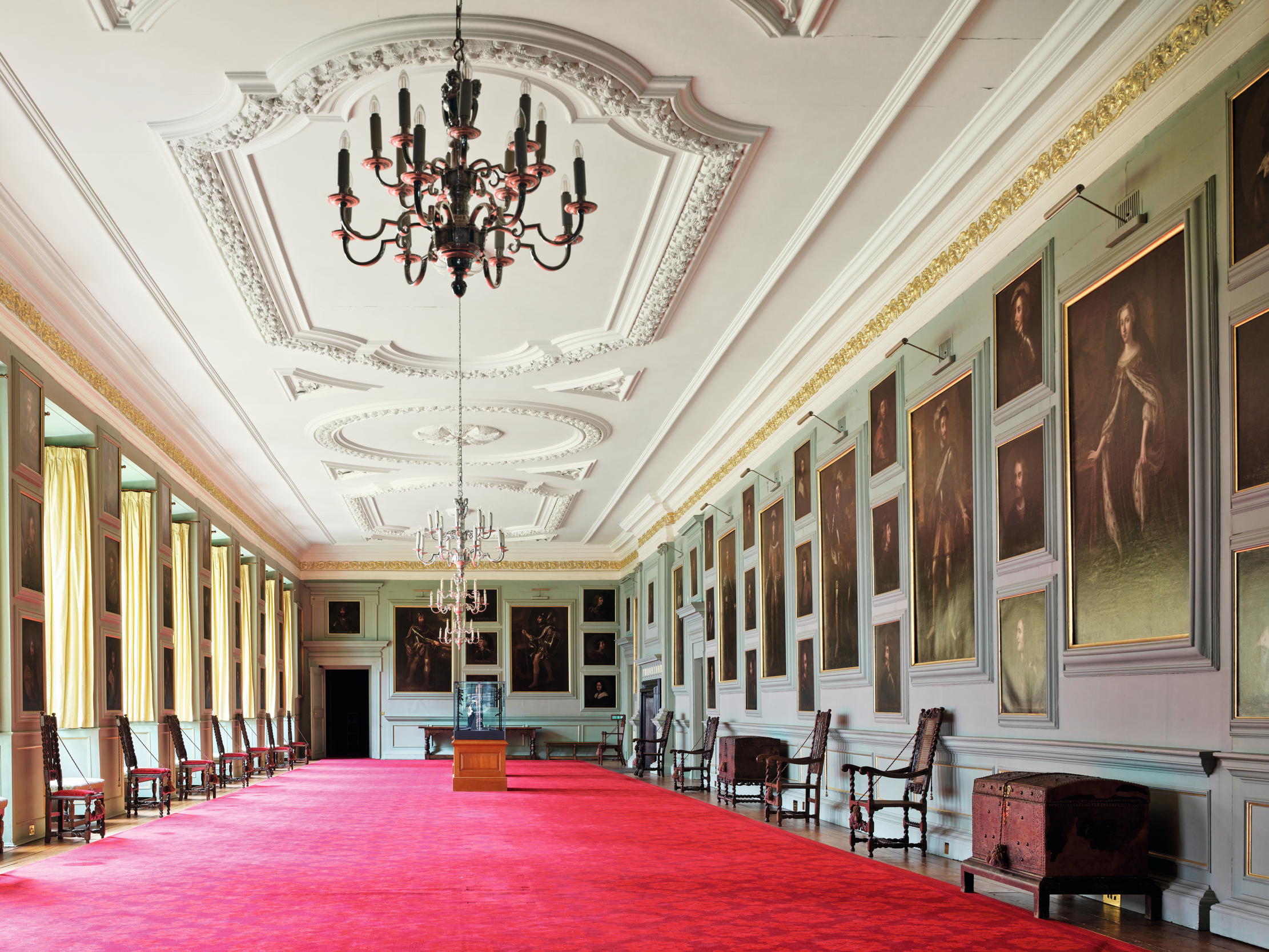
Queen Victoria and Prince Albert shared George IV’s Romantic enthusiasm for Scotland and an apartment was created within Holyroodhouse for the Royal Family by Robert Matheson, an Edinburgh architect who had previously worked under Reid. As part of the extensive redecoration undertaken at this time, the 17th-century plasterwork was coloured by the Edinburgh firm D. R. Hay & Co. All these Victorian interior schemes were reversed in the 20th century. In 1850, Queen Victoria became the first reigning monarch to sleep at Holyroodhouse since 1633.
By now, there was considerable public interest in the building and, in 1854, it became possible to buy tickets for 6d — Saturdays were free — to view the rooms associated with Mary, Queen of Scots. They attracted nearly 67,000 visitors in the first year. In 1863, Matheson oversaw the restoration of these rooms, which were dressed with historical furnishings to increase their appeal.
The early 20th century witnessed further important changes to Holyroodhouse. Before George V and Queen Mary’s coronation visit in 1911, work began to modernise the accommodation with bathrooms and electricity. The bold Victorian decoration of the West Drawing Room — the former Council Chamber — was also stripped away. It was during the 1911 Royal Visit that the first garden party was held in the grounds, today a well-established feature of the calendar during the monarch’s annual residence. The King and Queen also attended the consecration of the magnificent Arts-and-Crafts Chapel of the Order of the Thistle, designed by Sir Robert Lorimer at St Giles’s Cathedral. In 1906, it had been proposed to convert the ruined nave of the abbey to this purpose, but the expense was deemed too great.
After the First World War, the renovation of Holyroodhouse continued, with Queen Mary taking a close interest in the redecoration of the principal rooms. Where possible, local craftsmen and suppliers were employed. In 1922, massive new gates were erected as part of a memorial to Edward VII and, in 1925, it was proposed to open the Palace more generally to the public. To improve the quality of the objects on display, the Holyrood Amenity Trust was established in 1926 with the aim of acquiring ‘articles of historical, educational or aesthetic value suitable for inclusion within the walls of the Palace or in connection with it’. As a result of these changes, which culminated with the redecoration of the Throne Room (Fig 7), ‘the Palace of Holyroodhouse’ was recognised as the Sovereign’s official residence in Scotland.
The desire to improve the presentation of the Palace and its contents to the public remained a central theme of works during Elizabeth II’s reign. Particularly notable was the representation of Mary, Queen of Scots’s chambers by Alec Cobbe (Fig 2) and the accompanying museum, completed in 1994, and the opening in 2002 of what was then The Queen’s Gallery (and is now The King’s Gallery), designed by Benjamin Tindall Architects within the shell of the former Holyrood Free Church and the Duchess of Gordon’s School. This faces the new Scottish Parliament, which opened in 2004.
More recently, the mews has been renovated in order to provide new visitor facilities and a Learning Centre has been created in the Abbey Strand buildings on Canongate. These changes not only allow the Palace of Holyroodhouse to function effectively for The King on his official visits to the Scottish capital, but as a busy tourist attraction that tells the great building’s absorbing story.
For more details, visit rct.uk/visit/palace-of-holyroodhouse

John spent his childhood in Kenya, Germany, India and Yorkshire before joining Country Life in 2007, via the University of Durham. Known for his irrepressible love of castles and the Frozen soundtrack, and a laugh that lights up the lives of those around him, John also moonlights as a walking encyclopedia and is the author of several books.
-
 Two quick and easy seasonal asparagus recipes to try this Easter Weekend
Two quick and easy seasonal asparagus recipes to try this Easter WeekendAsparagus has royal roots — it was once a favourite of Madame de Pompadour.
By Melanie Johnson
-
 Sip tea and laugh at your neighbours in this seaside Norfolk home with a watchtower
Sip tea and laugh at your neighbours in this seaside Norfolk home with a watchtowerOn Cliff Hill in Gorleston, one home is taller than all the others. It could be yours.
By James Fisher
-
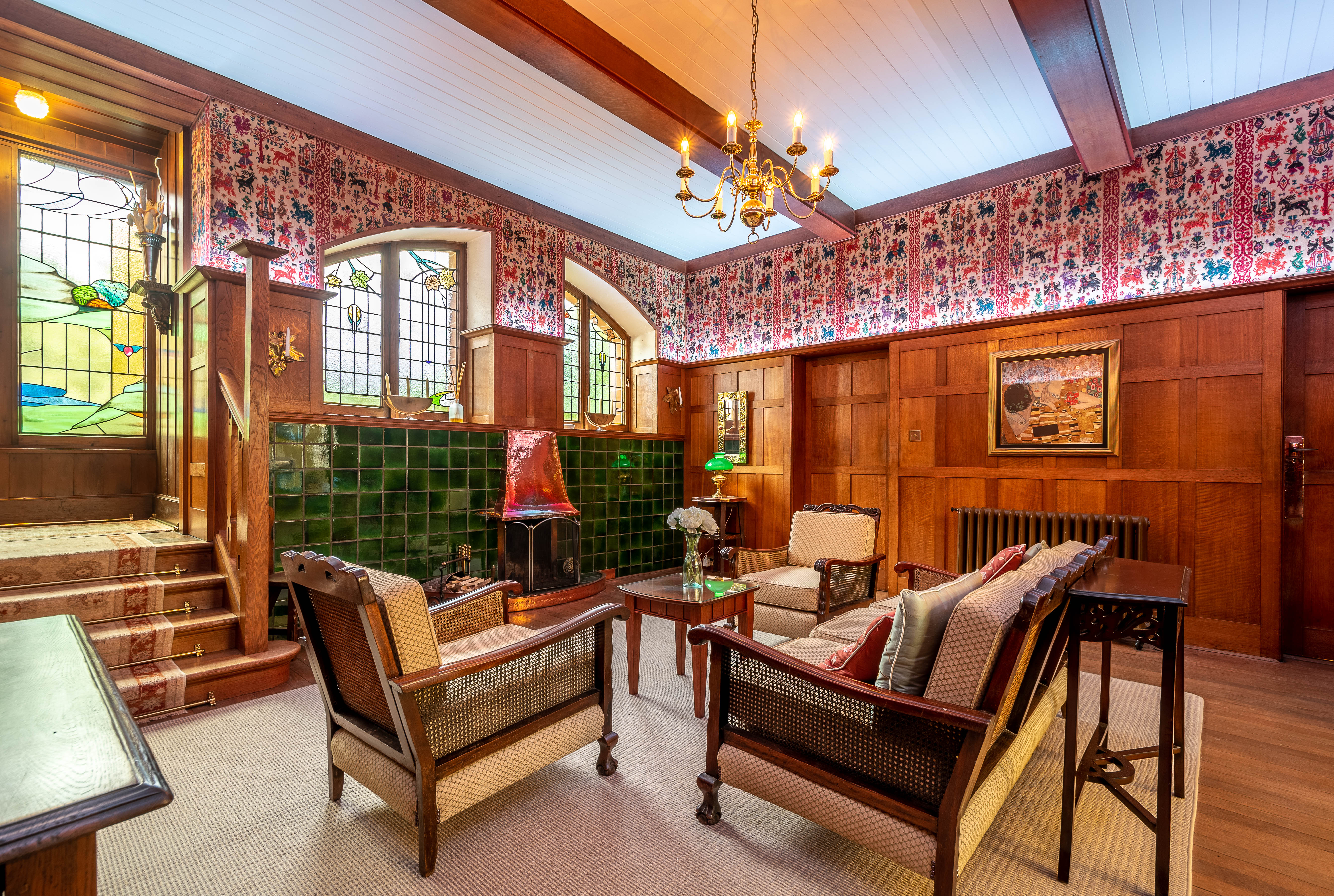 Seven of the UK’s best Arts and Crafts buildings — and you can stay in all of them
Seven of the UK’s best Arts and Crafts buildings — and you can stay in all of themThe Arts and Crafts movement was an international design trend with roots in the UK — and lots of buildings built and decorated in the style have since been turned into hotels.
By Ben West
-
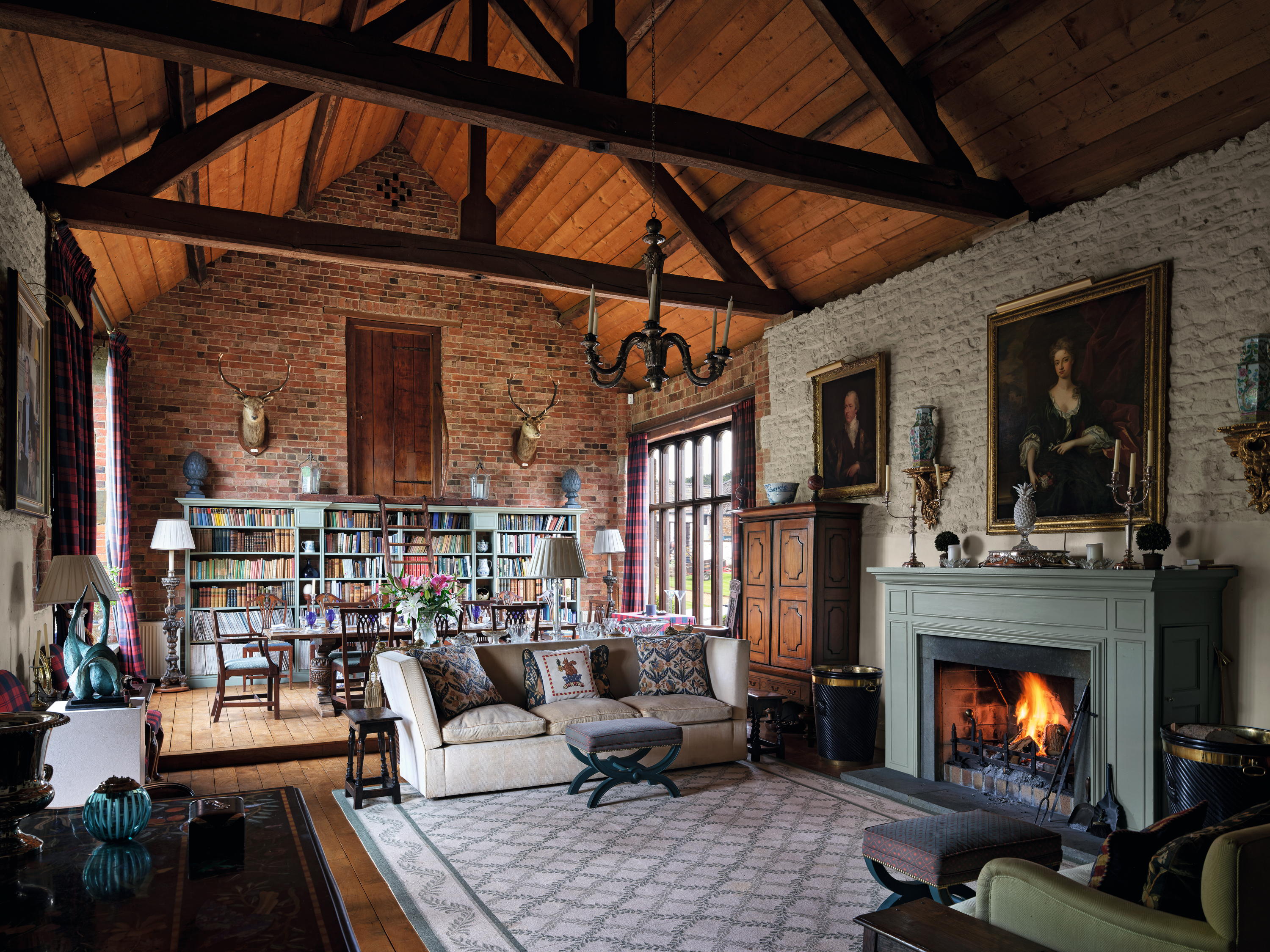 High Wardington House: A warm, characterful home that shows just what can be achieved with thought, invention and humour
High Wardington House: A warm, characterful home that shows just what can be achieved with thought, invention and humourAt High Wardington House in Oxfordshire — the home of Mr and Mrs Norman Hudson — a pre-eminent country house adviser has created a home from a 300-year-old farmhouse and farmyard. Jeremy Musson explains; photography by Will Pryce for Country Life.
By Jeremy Musson
-
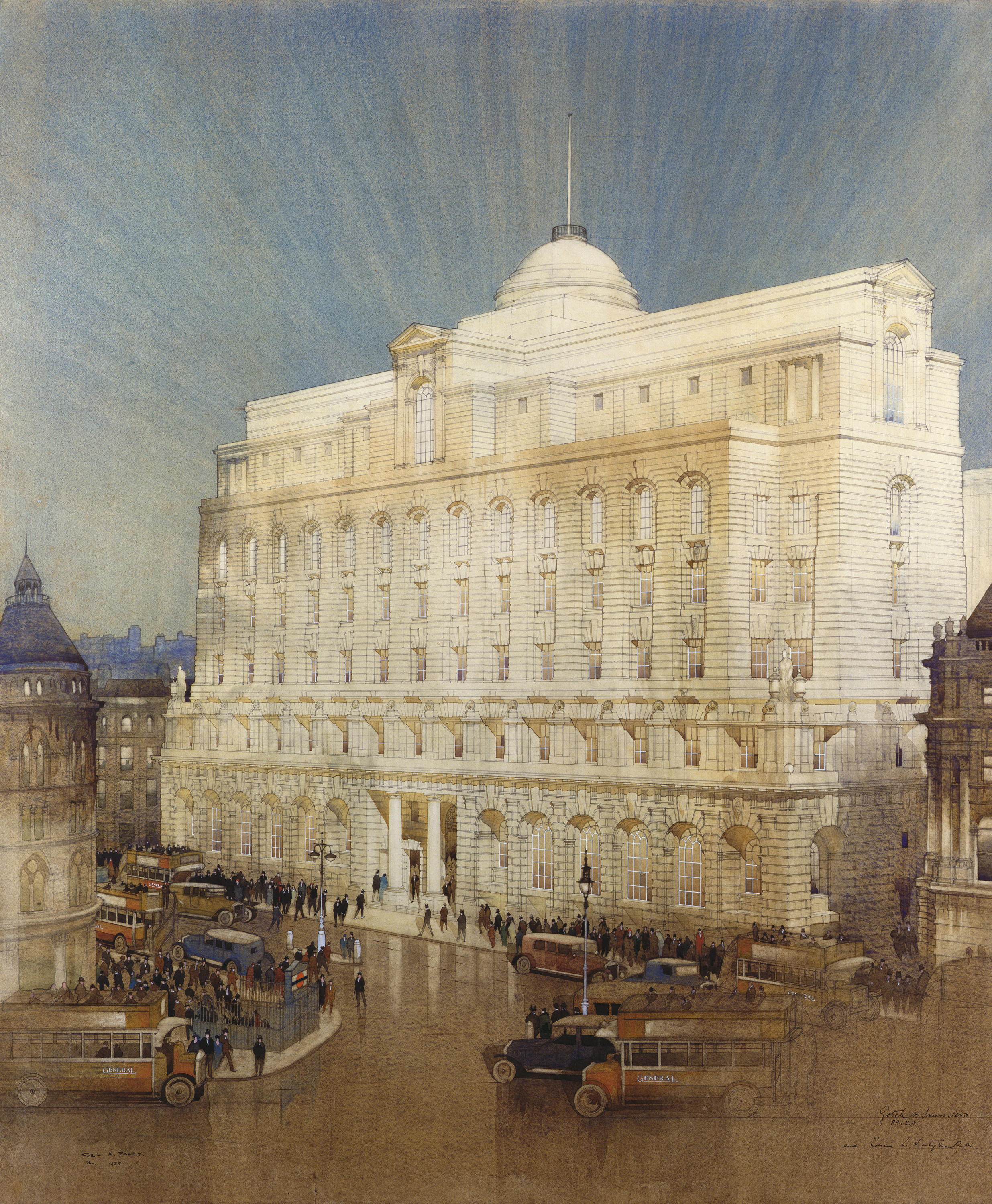 Sir Edwin Lutyens and the architecture of the biggest bank in the world
Sir Edwin Lutyens and the architecture of the biggest bank in the worldSir Edwin Lutyens became the de facto architect of one of Britain's biggest financial institutions, Midland Bank — then the biggest bank in the world, and now part of the HSBC. Clive Aslet looks at how it came about through his connection with Reginald McKenna.
By Clive Aslet
-
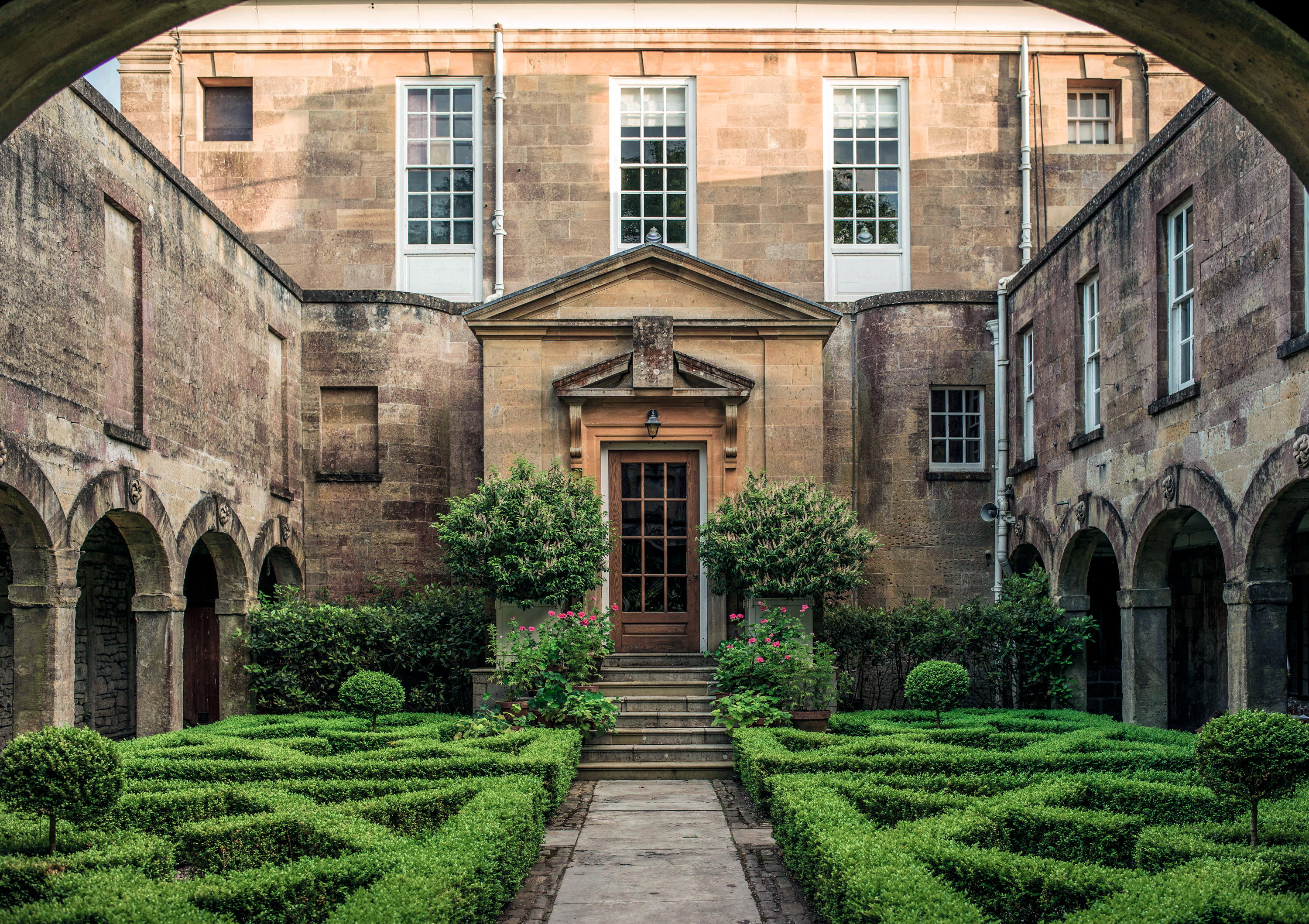 'There are architects and architects, but only one ARCHITECT': Sir Edwin Lutyens and the wartime Chancellor who helped launch his stellar career
'There are architects and architects, but only one ARCHITECT': Sir Edwin Lutyens and the wartime Chancellor who helped launch his stellar careerClive Aslet explores the relationship between Sir Edwin Lutyens and perhaps his most important private client, the politician and financier Reginald McKenna.
By Clive Aslet
-
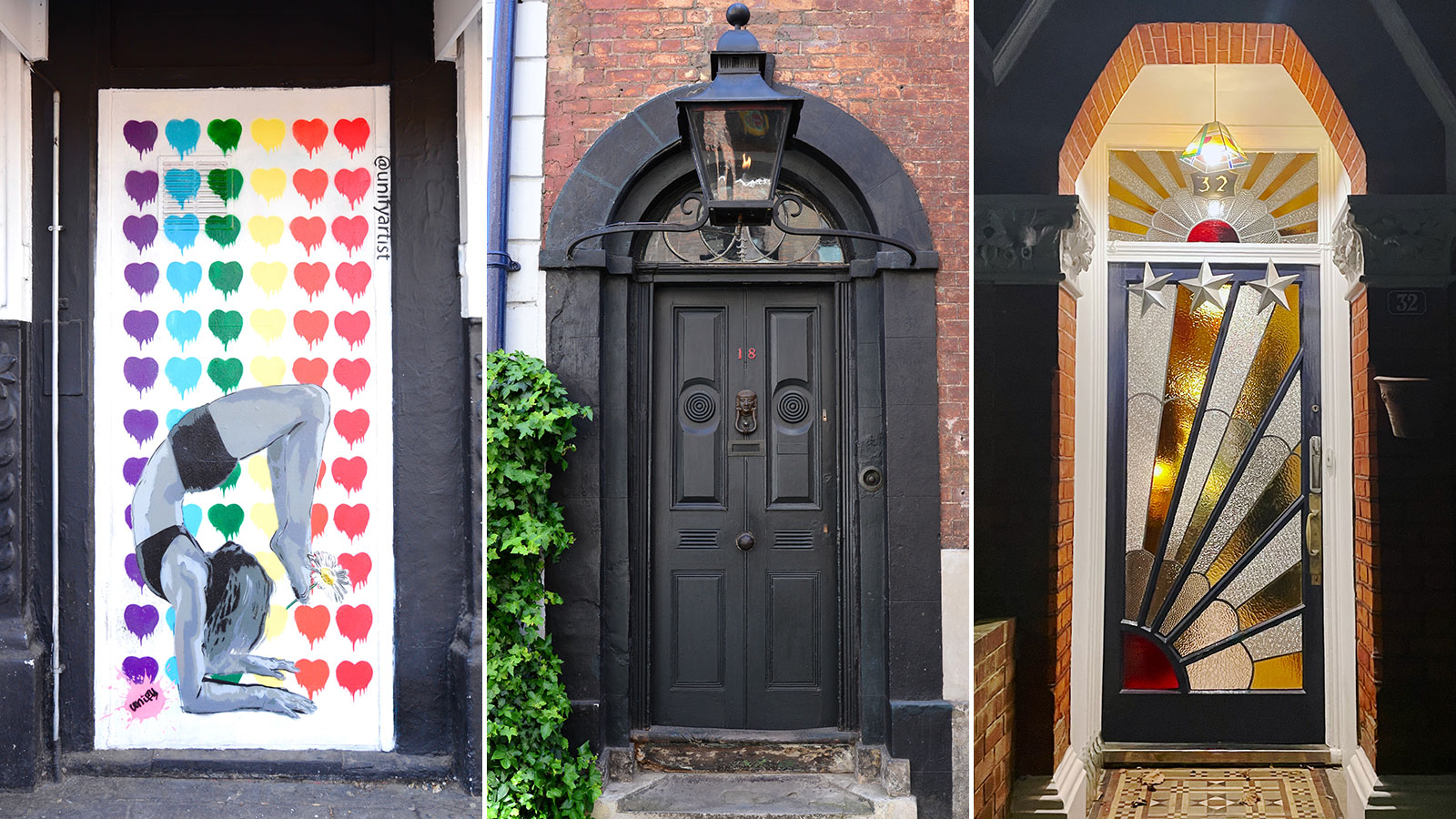 Cath Harries — The photographer on a 15-year quest to find the most incredible doors in London
Cath Harries — The photographer on a 15-year quest to find the most incredible doors in LondonBy Toby Keel
-
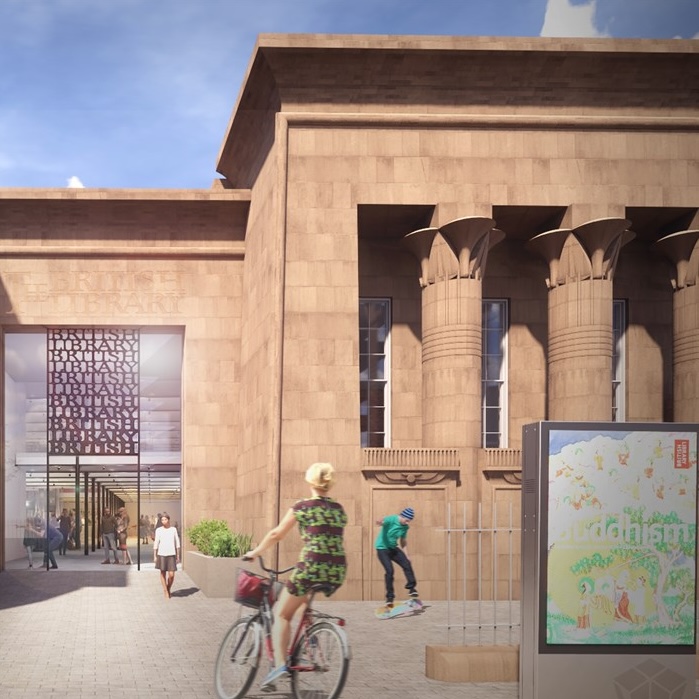 The extraordinary Egyptian-style Leeds landmark hoping to become a second British Library — and they used to let sheep graze on the roof
The extraordinary Egyptian-style Leeds landmark hoping to become a second British Library — and they used to let sheep graze on the roofThe project has been awarded £10million from the Government, but will cost £70million in total.
By Annunciata Elwes
-
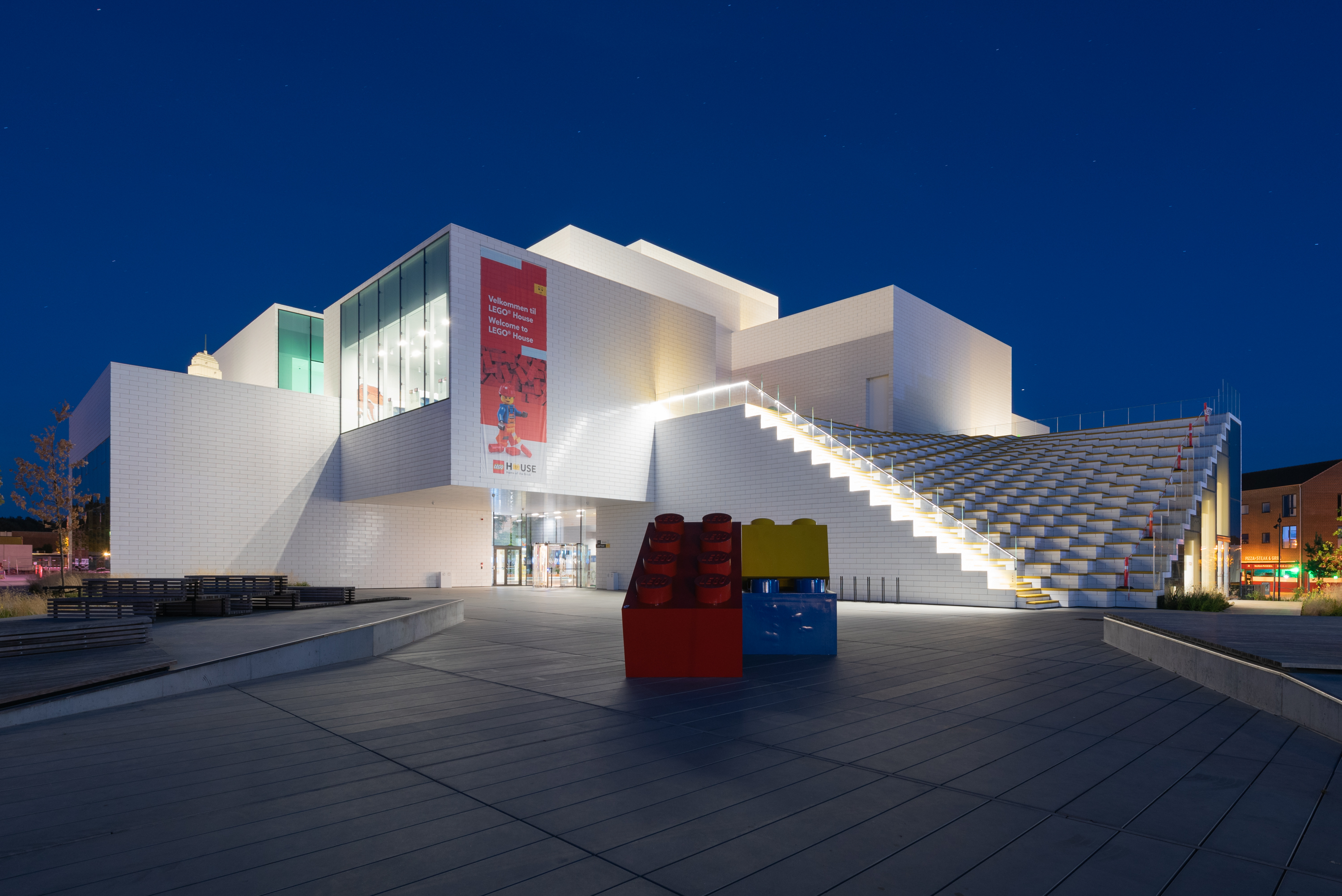 Art, architecture and plastic bricks at Lego House: 'It's as if the National Gallery set up easels and paints next to the masterpieces and invited you try your hand at creating a Van Gogh'
Art, architecture and plastic bricks at Lego House: 'It's as if the National Gallery set up easels and paints next to the masterpieces and invited you try your hand at creating a Van Gogh'The rural Danish town where Lego was created is dominated by the iconic toy — and at Lego House, it has a fittingly joyful site of pilgrimage. Toby Keel paid a visit.
By Toby Keel
-
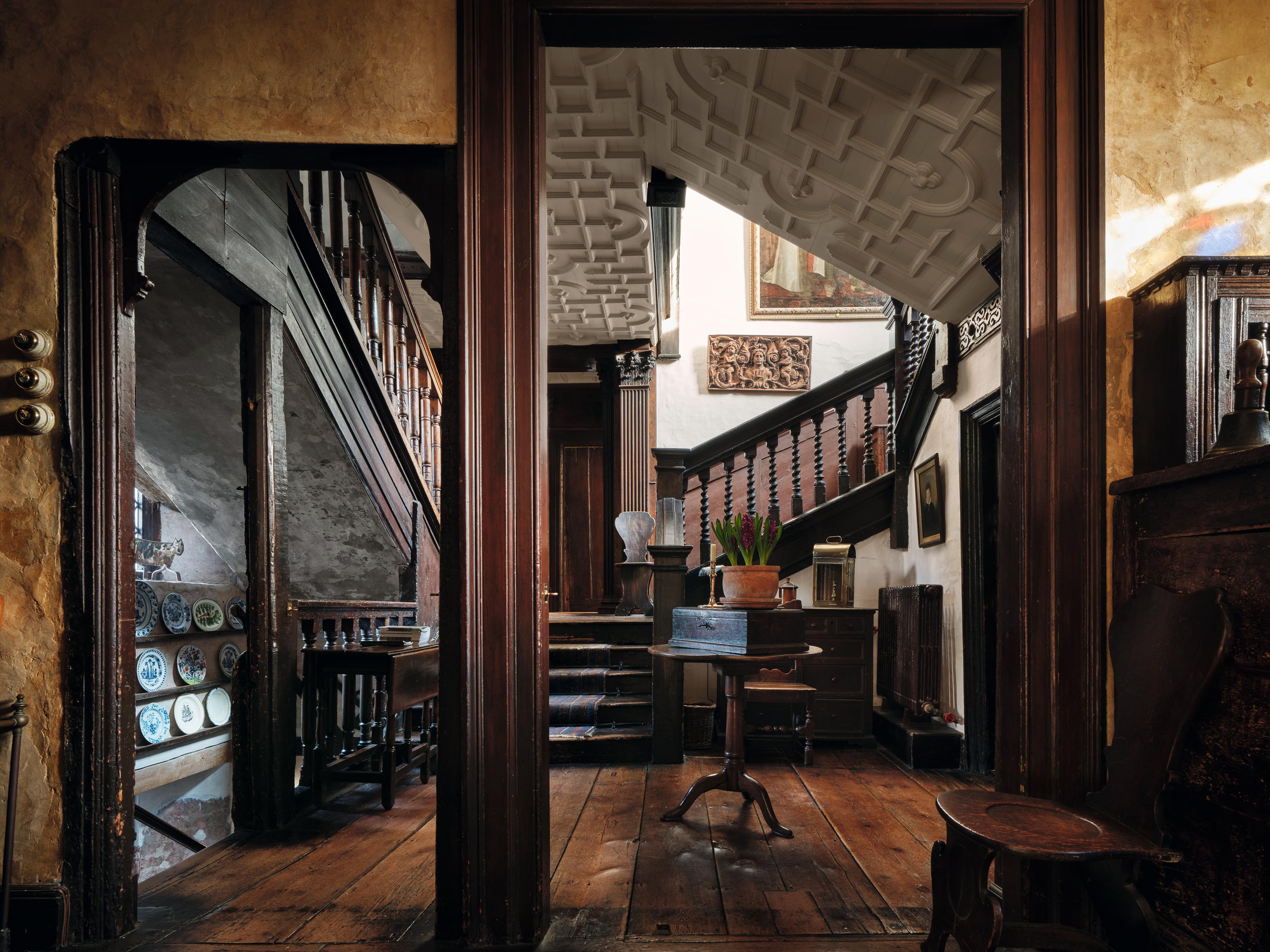 Restoration House: The house in the heart of historic Rochester that housed Charles II and inspired Charles Dickens
Restoration House: The house in the heart of historic Rochester that housed Charles II and inspired Charles DickensJohn Goodall looks at Restoration House in Rochester, Kent — home of Robert Tucker and Jonathan Wilmot — and tells the tale of its remarkable salvation.
By John Goodall